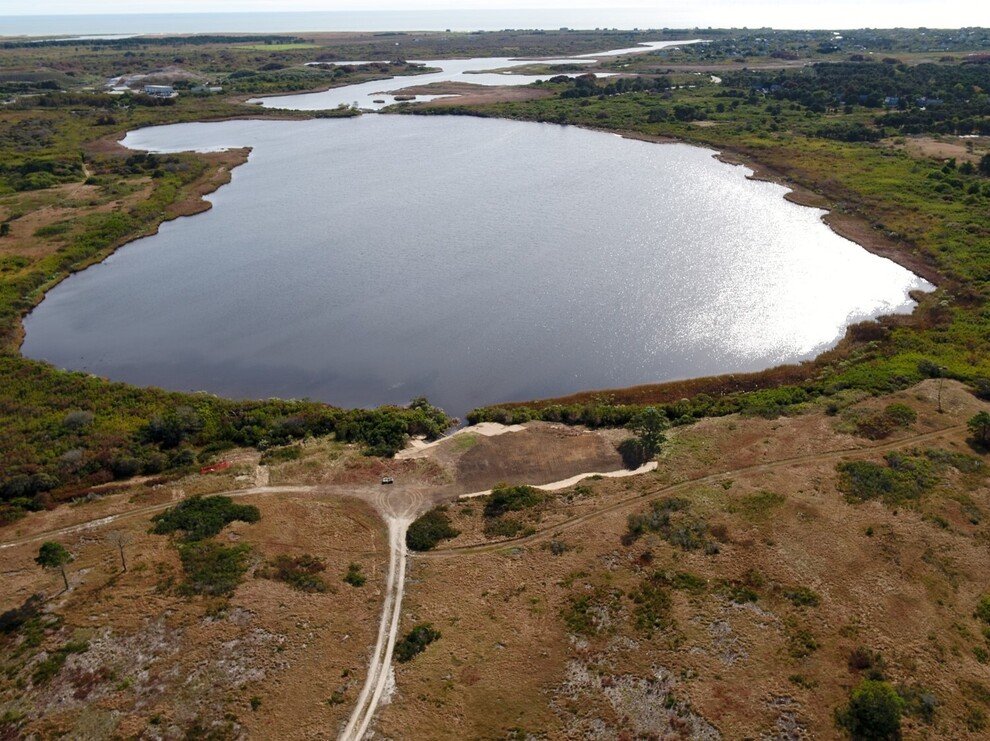
If You Build It, Purple Martins Will Come
Purple Martins have arrived on Nantucket for the first time ever. After three years of conservation efforts to support breeding habitat for the species, they have finally “set up house” at the Linda Loring Nature Foundation, primarily due to the efforts of Libby Buck, Conservation Science and Land Steward with LLNF.
First, a little more about purple martins: the latest seasonal residents on Nantucket Island.
Purple martins are colonial birds that are the largest of the swallow family in North America. They are insectivorous, which makes them a very welcome addition to our island.

It’s a Love-Hate Relationship
As June settles into true summer, the flora of Nantucket really comes alive. The beach roses scent the air along the dunes, our yellow thistles open for pollinators, and the golden heathers carpet the moors. This past week, while enjoying the early summer splendor, another blossom caught my eye: small clusters of whitish-green, each flower only ¼-inch in size. The delicate five-petal flowers aren’t showy or brightly colored, but they are pleasant, gently draping in small clusters. These flowers, however, aren’t the kind to put in an arrangement or bouquet. These deadly beauties actually belong to the poison ivy plant.

Call of the Osprey
A familiar sight along the harbor and around our many ponds, Ospreys are a common site as they dive for fish across the island. Ospreys (Pandion haliaetus) are iconic on-island, a part of our maritime community. Also known as Fish Hawks, they are abundant on Nantucket this time of year, having migrated back this way in late March. While these majestic birds of prey are now a fixture of early spring and summer on the island, that was not always the case.

Will Brood XIV Miss the Boat to Nantucket?
You may have been hearing some buzzzzz about cicadas in our regional news outlets lately. Throughout the state, people are preparing for an onslaught of insects. Why, when, and where?
Well, first the “what”: the emergence of Cicada Brood XIV begins this month and has got many people either bracing for a swarm or looking up cicada recipes. This is one of the few periodic cicada broods known from Massachusetts. But what does that mean for us here on Nantucket? And what even is a “brood” anyway?

The Mystery of Eels on Nantucket
As spring weather finally begins to grace us here on Nantucket, we begin to look for our favorite signs of spring; cherry blossoms, daffodil blooms, spring peeper chorus, osprey returning, and…eels! That’s right, the annual spring migration of young eels is upon us, heralding the start of spring for the island.

Current Nature: Resilient Restoration
On the banks of Long Pond, the Linda Loring Nature Foundation has been working on a restoration project that provides an example of how sea level rise can affect even seemingly inland areas of our island. As many of you know, Long Pond is connected to Madaket Harbor via the historic Madaket Ditch which was dug in the 1670s by English colonists and native Wampanoag. Because of this estuary connection, Long Pond itself is brackish and undergoes regular tidal turnover. In addition to the water being salty, this connection also means that Long Pond is subject to predicted sea level rise. Looking at various sea level rise scenarios expected with future climate change, even the most conservative projections show that sea level rise will impact the shoreline of the North Head of Long Pond, home to the Linda Loring Nature Foundation

How to Help Plan for Climate Resiliency
Living on an island surrounded by the sea, there is no escaping the effects of climate change. Others living inland may be able to bury their heads in the sand, but on Nantucket sea level rise, erosion, storm surge, and flooding are all very real impacts that we experience regularly.
It’s one thing to be aware of climate change and its impacts on the community: it’s another thing to plan for its effects and to take action. Nantucket has long been a community that works together to solve issues and protect the island and its residents. Nantucket is resilient: with the climate projections, we need to be a little more pro-active to stay resilient in the face of such change.

Current Nature: Nantucket’s 2nd Annual Climate Change Summit Returns September 4th
The second annual Nantucket Climate Change Summit will be held September 4th from 4-6:30 pm, hosted at the Great Harbor Yacht Club and organized by the Linda Loring Nature Foundation and the Nantucket Conservation Foundation with support from the Nantucket Community Foundation’s Remain Nantucket Fund. This year’s summit will consist of a panel of speakers from various island industries discussing how their industry is adapting to changes and what they may be preparing for in the near future. Panelists were selected to represent a wide array of island life including historic preservation and tourism, commercial fishing and aquaculture, and landscape and garden design.
